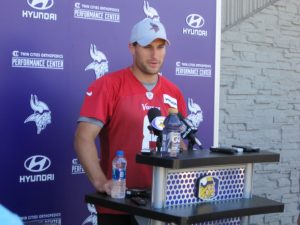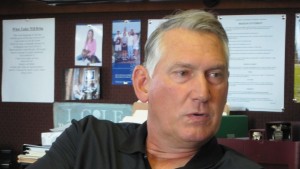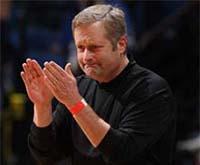The decision makers of Major League Baseball may yet salvage a season this summer but for sure they have messed up the possibility of its 30 teams playing opening day on July 4. Contentious negotiations between the ruling powers of baseball and the players association have soured the public on MLB, and the window has closed on a best practice public relations move that would have scheduled the Minnesota Twins and other clubs playing for the first time in 2020 on Independence Day.
Imagine the Twins on the Fourth of July playing at Target Field against one of their American League Central Division rivals. No fans in the seats but a six-figure Upper Midwest TV audience watching from homes in Minneapolis-St. Paul and small towns across the region. America’s pastime showcasing the “boys of summer” on the nation’s 244th birthday of independence.
The diversion of baseball is always welcome by the game’s fans but it would be more so than usual this summer. COVID-19 and social unrest have hit this region hard in recent months. Washing down a hot dog with a beer (or two) while watching the home town team sounds like a brief prescription to feeling better.
How interesting it would be to see the long-awaited debut of the Twins’ newest star, slugging third baseman Josh Donaldson. Opening day starter José Berríos could take another step toward becoming one of MLB’s more dominant pitchers. Might a healthy Byron Buxton save the game for the Twins with a spectacular catch in center field? How about a perfect day at the plate for Luis Arráez, the terrific rookie who last year showed he might become Minnesota’s best second baseman since Hall of Famer Rod Carew.
MLB is embarrassed and should be, that there is still no final plan to have a 2020 season. It’s definitely too late to have a few weeks of training as a prelude to a July 4 opener—as cool as that would be. Summer time is baseball’s annual window but instead it’s looking like basketball, football, hockey and soccer could be center stage.
Perhaps there will yet be a MLB 2020 season, but the game has struck out on an Independence Day opener, missing a crackerjack opportunity to kiss and make up with its fans.
Worth Noting
This is supposed to be the Twins’ 60th season in Minnesota. The Washington Senators relocated here for the 1961 season and became the Twins. That year the Twins opened the season in New York, playing their first game in Minnesota franchise history. A mediocre Twins team defeated the mighty Yankees of Mickey Mantle, Roger Maris and other stars, 6-0.
With economics threatening the existence of minor league baseball, have to wonder if 69-year-old St. Paul Saints owner Mike Veeck could be interested in selling. A baseball source thinks the Saints might fetch $20 million in a sale.
Vikings offensive coordinator Gary Kubiak indicated yesterday in a Zoom call with media that Justin Jefferson, the team’s No. 1 draft choice this spring, is likely to play regular minutes at the slot position versus outside receiver. The slot was a primary position for Jefferson with national champion LSU last year.
Special teams coordinator Marwan Maalouf raised the possibility of Jefferson returning punts as he did for the Tigers. The Vikings may use two punt returners at times to improve returns, an assignment Maalouf indentified as a special teams priority. “He (Jefferson) could possibly be one of those guys,” Maalouf said.
The Vikings rotated multiple players in the punt return role last year without much impact. Fifth round draft choice and wide receiver K.J. Osborn is a definite candidate to return punts. Maalouf praised the rookie’s explosiveness, vision and skill in catching the football. He said veteran corner Mike Hughes is a possibility, too.

Kubiak said quarterback Kirk Cousins has shown his leadership in the offseason, despite COVID-19 preventing players gathering in team workouts. “…I think Kirk came out of last year with a lot of confidence as a person and a player,” Kubiak said.
Kubiak talking about how communications with players and others has been mandated by technology because of the pandemic: “I know a hell of a lot more about computers than I did six months ago.”
When the Minnesota Wild begins playing there will be a focus on 23-year-old wing Kevin Fiala, who might emerge as the most exciting young talent on any professional sports team in the Twin Cities. His offensive skill set is so impressive he draws comparisons to Marian Gaborik and Dino Ciccarelli—two of the most gifted scorers in Minnesota pro hockey history.
Fiala had a fast close to the 2019-2020 season that ended early because of the pandemic, but he created a big impression. “He made everybody in the league look bad,” a longtime NHL observer told Sports Headliners.
Fiala tied his NHL career high of 23 goals last season. In the last five games he had seven points including four goals. He was acquired from Nashville during the 2018-19 season in what now can only be described as a smart move by former and much criticized Wild general manager Paul Fenton. Fiala now must show his skills consistently over a full season.
Condolences to the family and friends of former Gophers All-American and Minneapolis Lakers star Dick Garmaker, who recently passed away. Garmaker was one of the many natives of Hibbing, Minnesota who earned fame in sports, entertainment and politics. (Personal note: his wife Darlene was my seventh grade art teacher at Ramsey Junior High School in Minneapolis.)
Legendary Gopher football tackle Bobby Bell turned 80 yesterday.
1 comment





